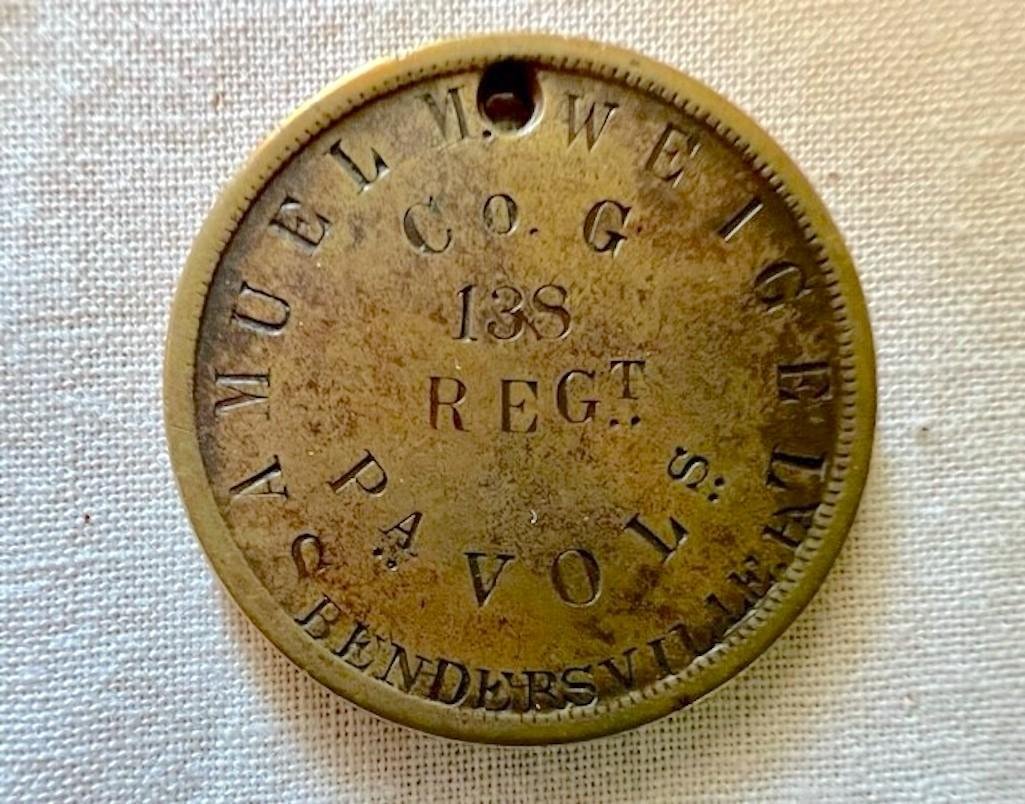New book challenges Civil War’s old myths
Charles W. Mitchell, co-editor with historian Jean H. Baker of the new book, “The Civil War in Maryland Reconsidered,” at his home in Parkton, Md., on Nov. 21. (Amy Davis/Baltimore Sun)
By Jonathan M. Pitts
January 17, 2022 at 6:06 p.m. EST
Washington Post
Regular folks and history buffs who believe Maryland leaned strongly toward the Confederacy during the Civil War era have never lacked evidence for the claim.
It was a Marylander, after all, on the U.S. Supreme Court who wrote the opinion in the infamous 1857 Dred Scott case, which found that Black people were not citizens — a ruling that helped spark the fighting. And Marylanders voted for a Southern sympathizer, not Abraham Lincoln, for president in the election of 1860. Then, some 20,000 Marylanders took up arms for the Confederacy.
But such facts can be deceiving if looked at in a vacuum — or so say the scholars behind a critically acclaimed new book that aims to explode long-standing myths about the period.
In “The Civil War in Maryland Reconsidered,” a collection of 13 essays assembled and edited by Baltimore historians Charles W. Mitchell and Jean H. Baker, are independent thinkers from as far away as California and England and as close as Johns Hopkins University. They point out, among other things, that contrary to popular belief, Maryland judges refused to put the Dred Scott decision into effect; that more Marylanders voted, in total, for the three presidential candidates who backed the Union than they did for John C. Breckinridge, the Southern Democrat who carried the state in 1860, and that four times as many Old Line State men fought for the Union than for the South.
Maryland, in short, was less sympathetic to the Confederate cause, and more behind the Union, than generations of historians have implied, says Mitchell, a self-taught Civil War expert, author and editor who got the sprawling essay project rolling four years ago.
History, he says, is framed by the values of those who pass it along. In the case of Maryland’s antebellum and Civil War history, the men and women who shaped it first were people who held to the notion that the Southern cause — far from being a bloody campaign to preserve slavery — was a matter of states’ rights. They viewed it as a noble crusade that failed only because the Union side was better equipped and funded.
The earliest chroniclers, he says, were Confederate veterans. The generations of historians who succeeded them wrote at a time when powerful Democrats, North and South, were still working to deny African Americans full enjoyment of their freedoms.
“The same Confederate sympathizers who had lost the war worked hard to win it in the history books, and for many years, they succeeded,” Mitchell says, including in textbooks used in Maryland well into the 20th century.
It wasn’t until the last 20 years or so, Mitchell adds, that younger scholars began training their focus on the kinds of period documents their forebears ignored.
By diving into court and estate records, schedules of enslaved people, letters written by ordinary citizens, articles in the Black press and more, those scholars, including several represented in the book, began to put together a more comprehensive history — one that weakens Maryland’s “Lost Cause” narrative.
Mitchell and Baker, a former history professor at Goucher College and the author of multiple award-winning books, conceived “The Civil War in Maryland Reconsidered” as an entry in that new vein. Early reviewers say they’ve struck a blow for a more accurate, fuller telling of the CLICK HERE FOR COMPLETE STORTY













